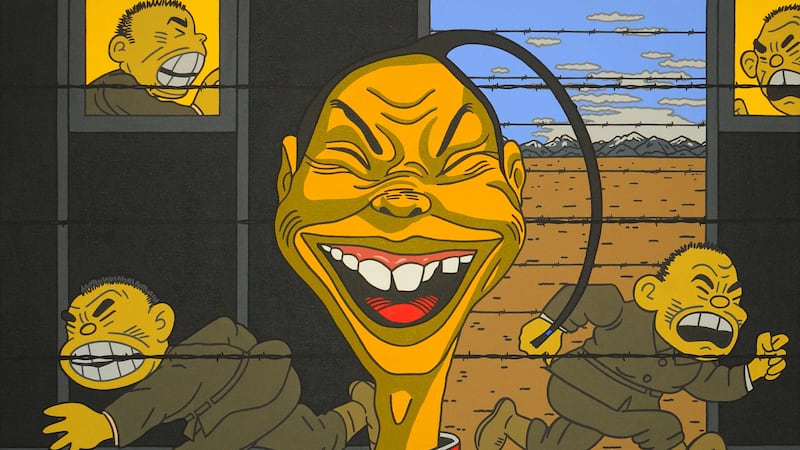In the spring of 1942, Roger Shimomura and his family were told to pack one suitcase and prepare to move from Washington state to the Minidoka internment camp in Idaho. Like my grandmother, and 120,000 other people of Japanese ancestry in the United States, Shimomura's family had only days to make arrangements to sell their home, business and possessions for pennies on the dollar.
While current political sentiments have brought to mind the illegal incarceration of Japanese detainees—62 percent of whom were U.S. citizens—during World War II, this massive rollback of civil rights is typically only briefly mentioned in history schoolbooks.

Shimomura, 77, wants to make sure no one forgets.
This year marks the 75th anniversary of Executive Order 9066, in which President Franklin D. Roosevelt authorized the federal government to detain Japanese Americans without trials or hearings. In today's political climate, is it really shocking to imagine President Trump locking up thousands of American citizens based on xenophobic paranoia?
Influenced by his childhood in the camps, his service in the U.S. Army and his exposure to 1960s experimental art in the Bay Area, Shimomura has been a vibrant force interpreting the West Coast Asian-American diaspora for decades. Elements of Shimomura's pop art and Japanese ukiyo-e style woodblock prints juxtapose American ideals with images of traditional Japanese representations and stereotypes.
His works are part of permanent collections at the Metropolitan Museum of Art in New York, the Smithsonian American Art Museum in Washington, D.C., and the Seattle Art Museum, to name a few. And now you can see a selection of his work, Yellow Terror: The Collections and Paintings of Roger Shimomura, at the Oregon Nikkei Legacy Center in Old Town.
Shimomura is also an avid collector of World War II memorabilia, a small selection of which is a part of the exhibit. The hateful tokens are shocking even to those well-versed in the era's history—the spread of pins, posters and propaganda showing in colorful detail the depths of anti-Japanese sentiment within American society.
We spoke to Shimomura about the importance of facing America's past, the legacy of internment camps, and the likelihood of it happening again.
WW: As you discovered more collectibles, were you ever shocked by the vicious materials from that time?
Roger Shimomura: First of all, this is not one of the larger collections of this sort. There are over 2,000 items in the collection [at Wing Luke Museum of the Asian Pacific American Experience in Seattle], of which you are seeing very few samples in this exhibition. I have seen one collection of similar materials that exceeded over 25,000 pieces—no duplicates—[in the Yoshio Kishi and Irene Yah Ling Sun Collection at New York University]. Once you've been exposed to a certain level of extremism, nothing surprises you anymore.
Why share your collection of propaganda with the public?
I didn't believe the public would believe it till they saw it for themselves.
What do you think of Islamophobia arising here, and across the world?
It's the culture of "hate it if it's different" rearing its head again. In this case, if you're not white, you are the "other." Now it's the Muslims' turn to be hated for their differences.
Is there a risk of American citizens being gathered by ethnicity or religion and imprisoned again?
Under this presidential regime, anything is possible. [Trump] even said he might have made the same choice that was made during World War II.
How do internment camps continue to influence today's Japanese-American identity?
There is a level of shame that varies from former incarceree to incarceree. This is noted in certain traits that are passed on through the generations in patterns of behavior. Future studies will show it will take several generations for this to correct itself.
What about the effects of the internment camps on the identity/culture of the United States?
It proves that America is not infallible and can make monumental-sized mistakes.
What do you hope people remember when they look at your work?
I am that stick in the eye that won't let you forget.
Yellow Terror: The Collections and Paintings of Roger Shimomura is at Oregon Nikkei Legacy Center, 121 NW 2nd Ave., oregonnikkei.org, through July 16. 11 am-3 pm Tuesday-Saturday, noon-3 pm Sunday. $5, $3 seniors and students, free on First Thursday.
